
Dha / da (ဓား)
Burmese word for sword, knife or chopper.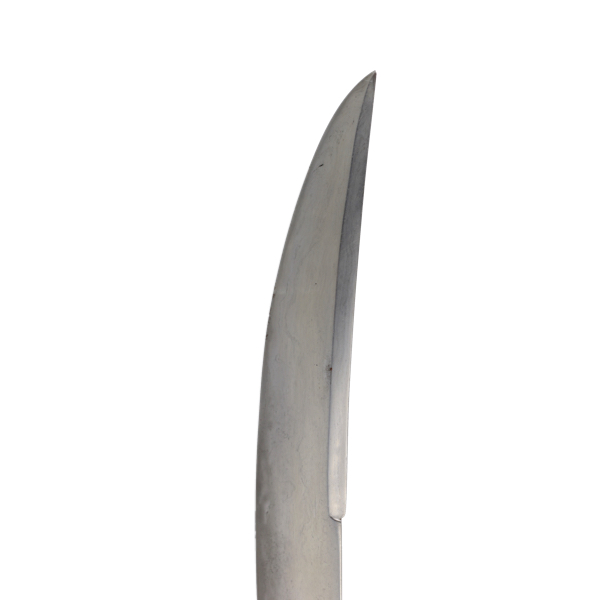
Yànlíngdāo (雁翎刀)
A Chinese saber type that translates as "goose-feather saber".
Yànchìdāo (雁翅刀)
Chinese saber type with a gently curved blade and clipped tip.
Liǔyèdāo (柳葉刀)
A Chinese saber with a gentle curve.
Yànmáodāo (雁毛刀)
A Chinese saber type with a mainly straight blade that curves up at the tip. It literally means "goose-quill-saber".
Dāndāo (單刀)
Literally "single saber", it refers to any type of dāo used solely without shield or weapon in the other hand.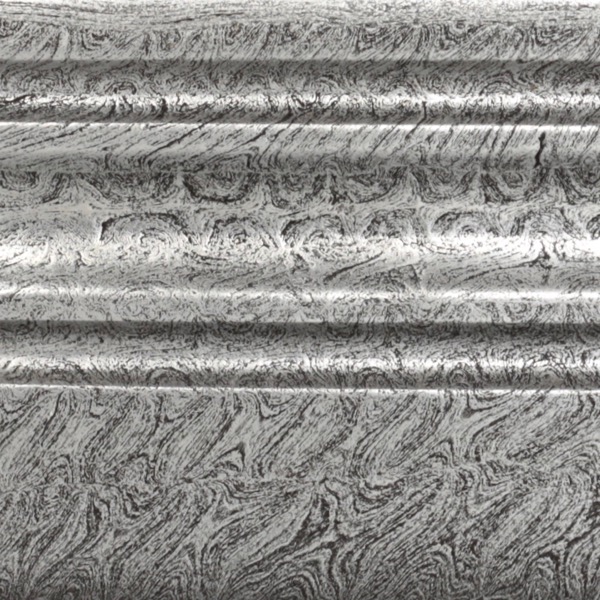
Twist-core steel
A type of pattern-welding using twisted rods of steel.
Huāwéngāng (花文鋼)
A type of pattern welding known in English as twist-core.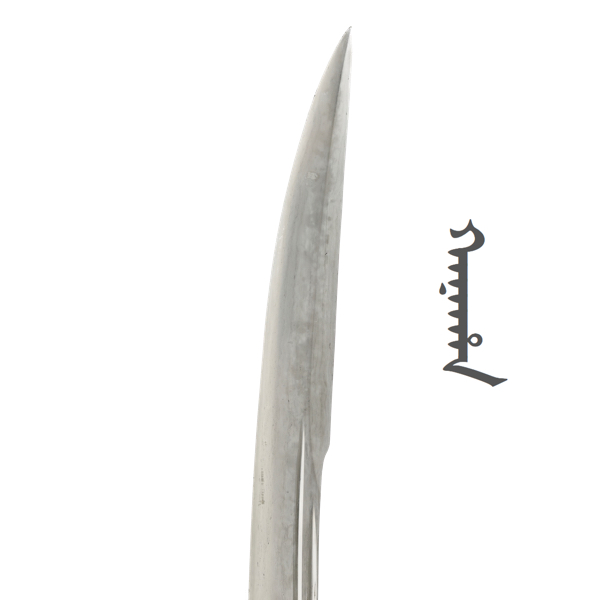
A 17th century Manchu saber
A massive 17th century saber blade with markings in Manchu and Chinese.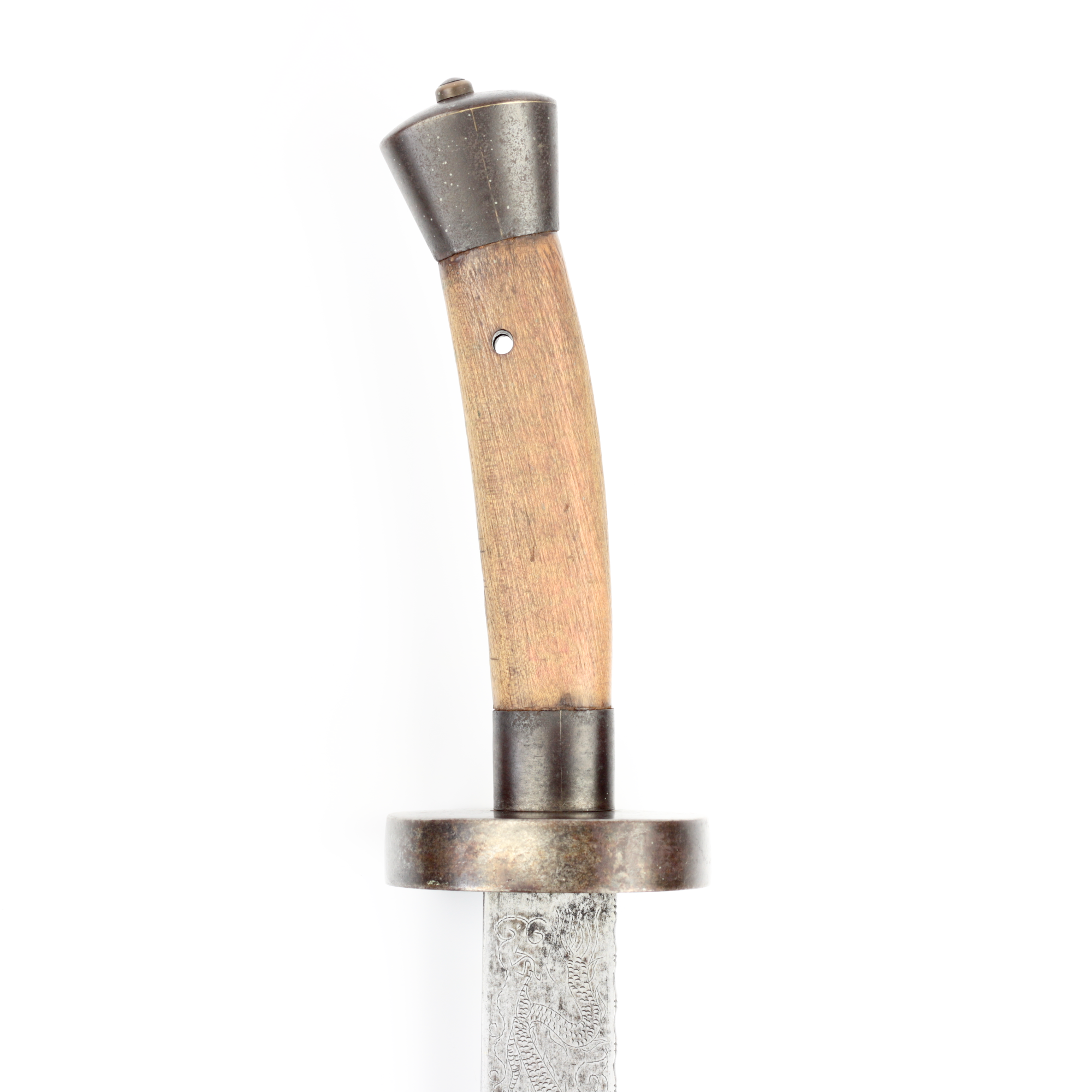
Niuweidao with Guangxu mark
Dated 1895. Large and heavy, a quality piece.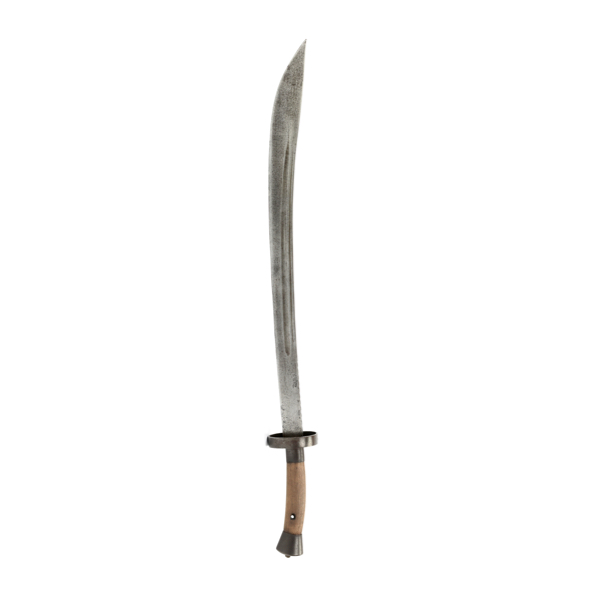
Niúwěidāo (牛尾刀)
A late form of Chinese saber with a pronounced widening at the tip.
Glossary of Chinese saber terminology
An overview of Chinese saber terminology as found in Chinese texts.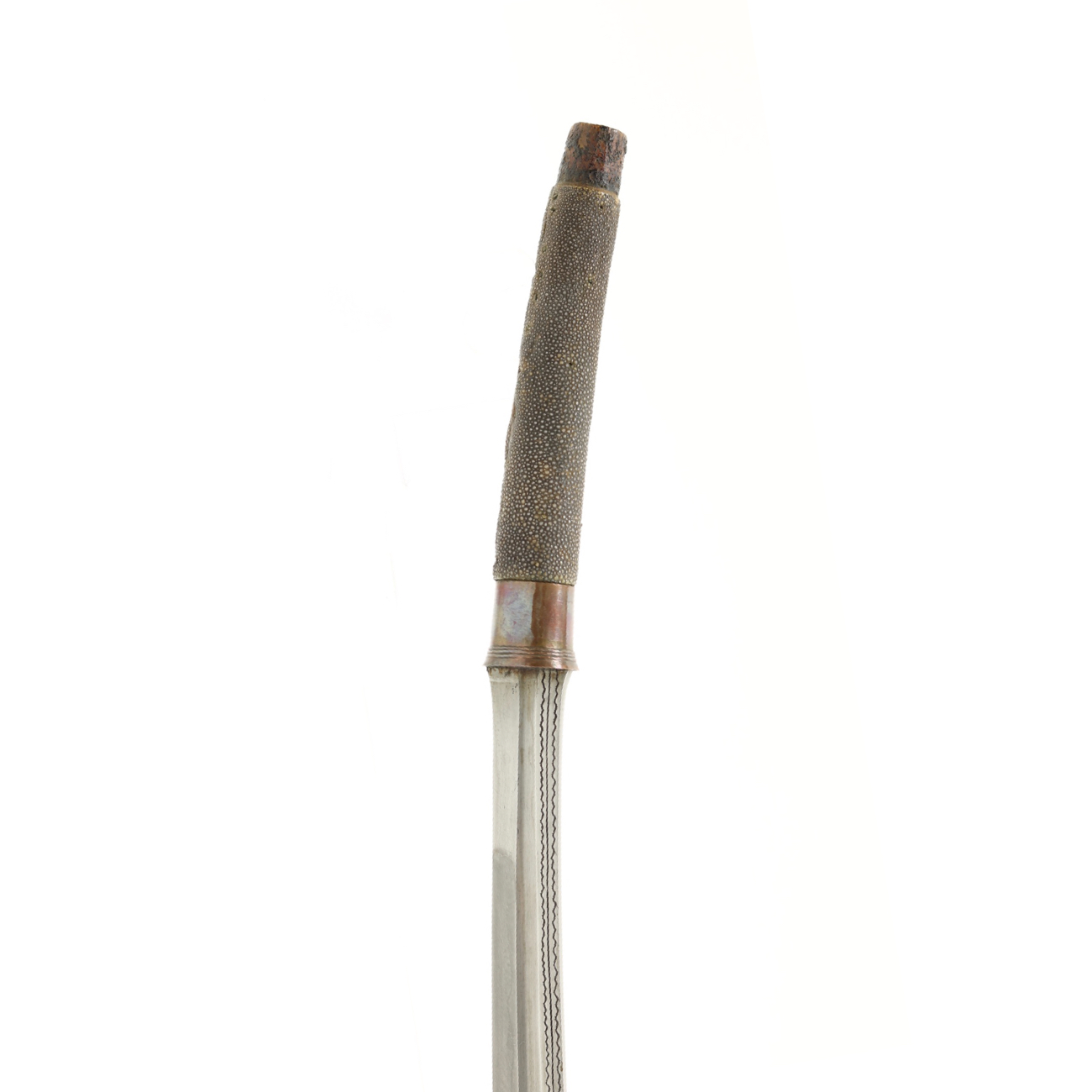
A heavy Burmese dha
With a very good, substantial blade with differential heat treatment.
Large Vietnamese trường đao
Of very good quality for this type of weapon.
A large Vietnamese falchion
Description
A rather unusual Vietnamese falchion, by lack of a better name for the type.

Late Qing southern saber
With differential heat-treatment, creating a cloudy crystalline effect along the edge.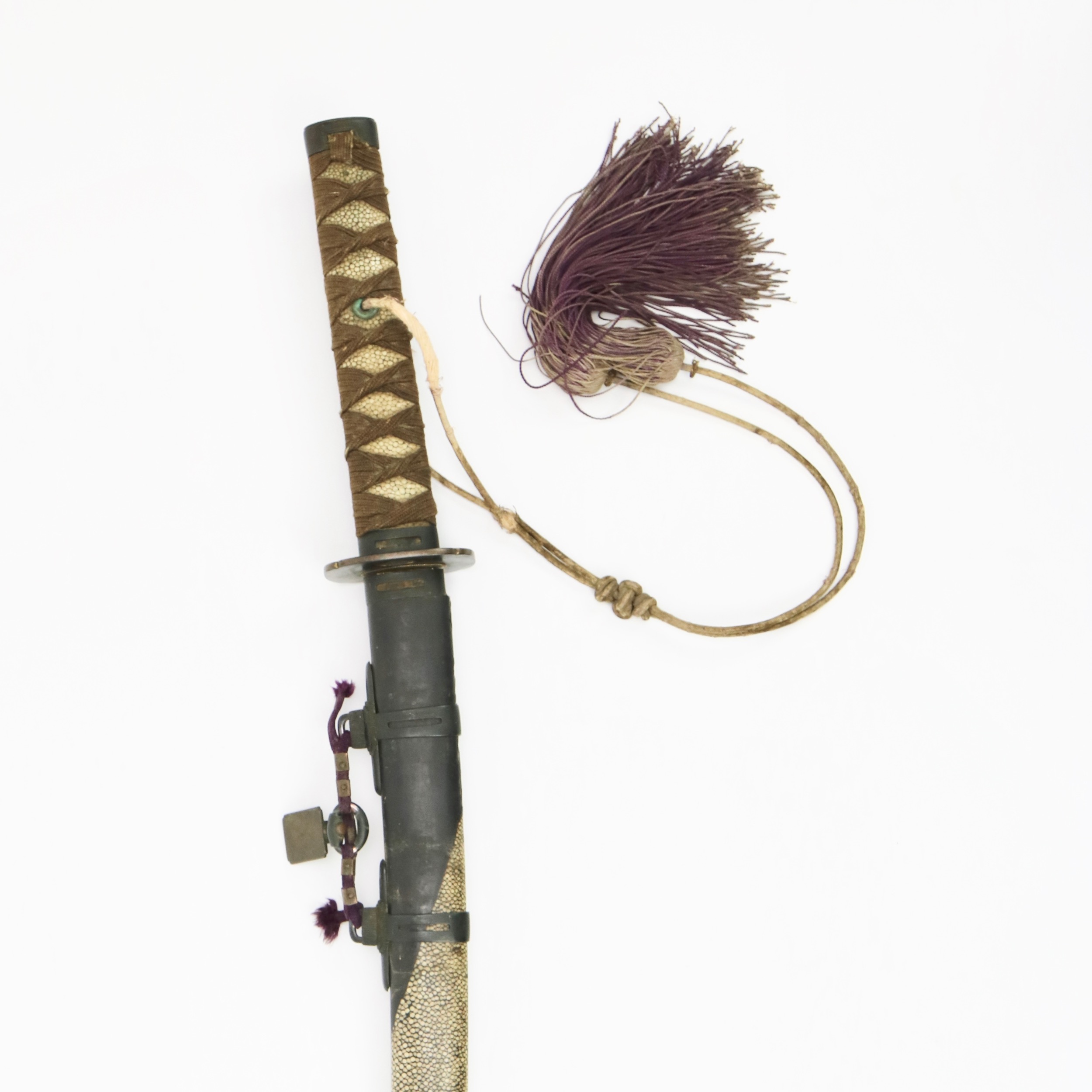
Korean ceremonial saber
Of a type referred to as byeolungeom, "sword used by king’s guard officials".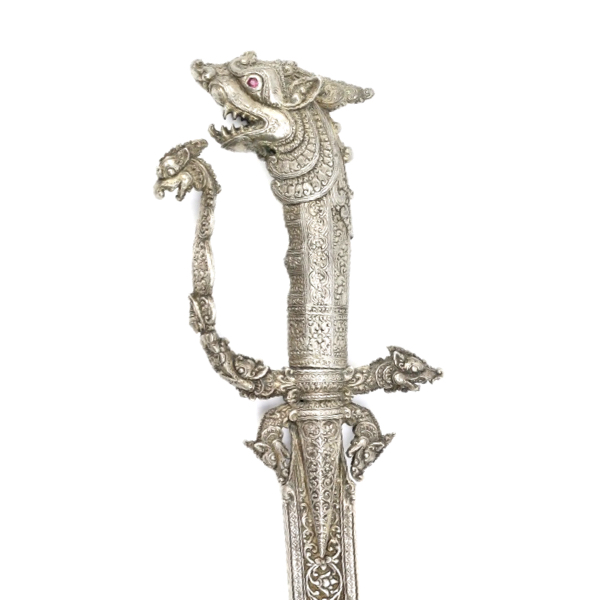
A fine silver hilted kasthāné
Of the Royal Workshops of the Kingdom of Khandy.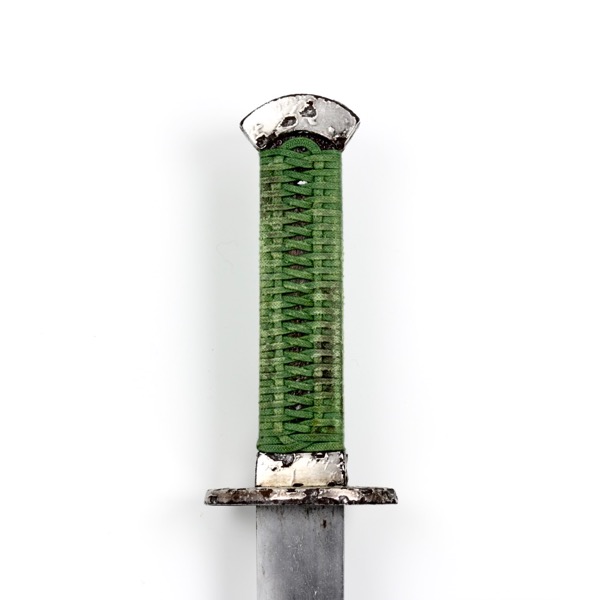
Early Qing saber
A rare Chinese officer's saber of the 17th century.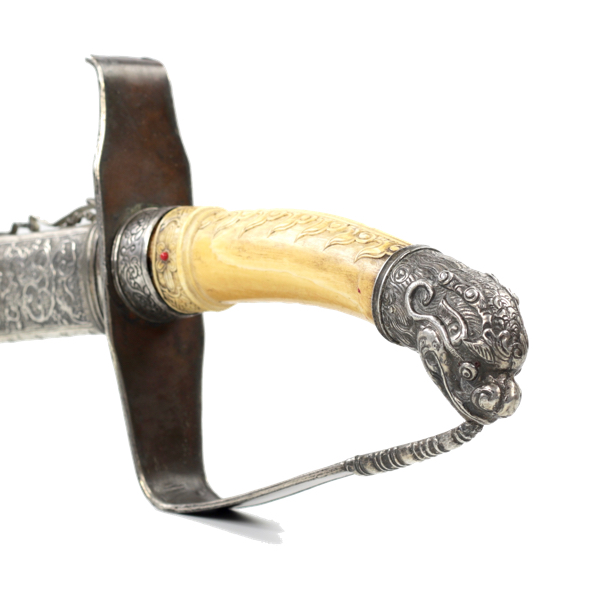
Vietnamese ceremonial saber
A magnificent example of a Vietnamese ceremonial saber, or guőm.
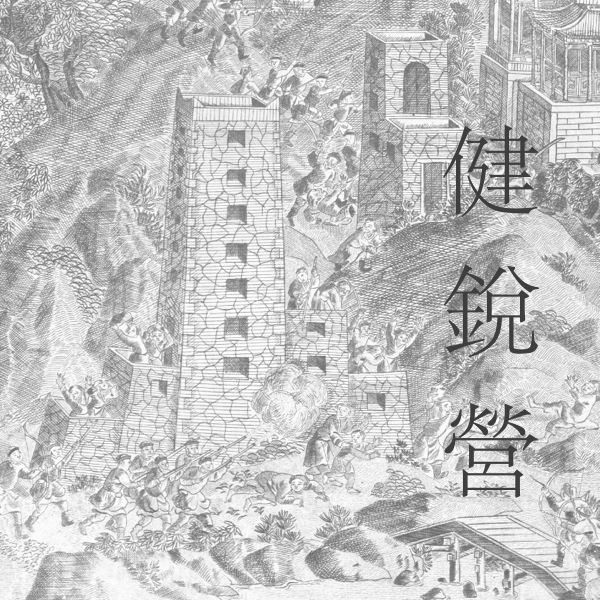
Jianruiying (1); introduction
The Jianruiying were a small elite unit of specially selected Manchu soldiers under the Qing dynasty. They were trained to overcome rough terrain, obstacles, and rivers in order to commence special attacks towards fortifications. In some ways, they are comparable to today's special forces.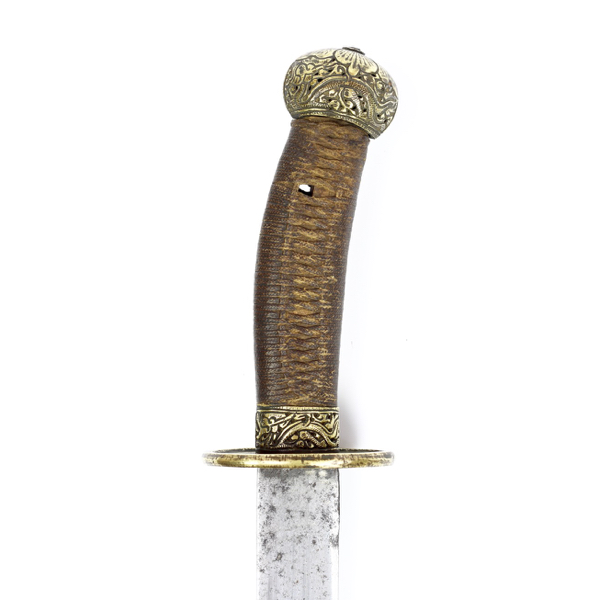
Excellent Qing officer saber
Introduction
The yaodao, literally "waist saber" was the standard side-arm for the Qing dynasty mi

Talwar with southern style hilt
With a curved hollow ground blade with a narrow dorsal groove and false backedge.
Ming dynasty saber blade
Introduction
The Chinese saber comes in a great variety of curvatures, profiles, and with different combina

Peidao in iron fangshi mounts
Introduction
The terms peidao or yaodao are synonyms that were in use simultaneously in Q
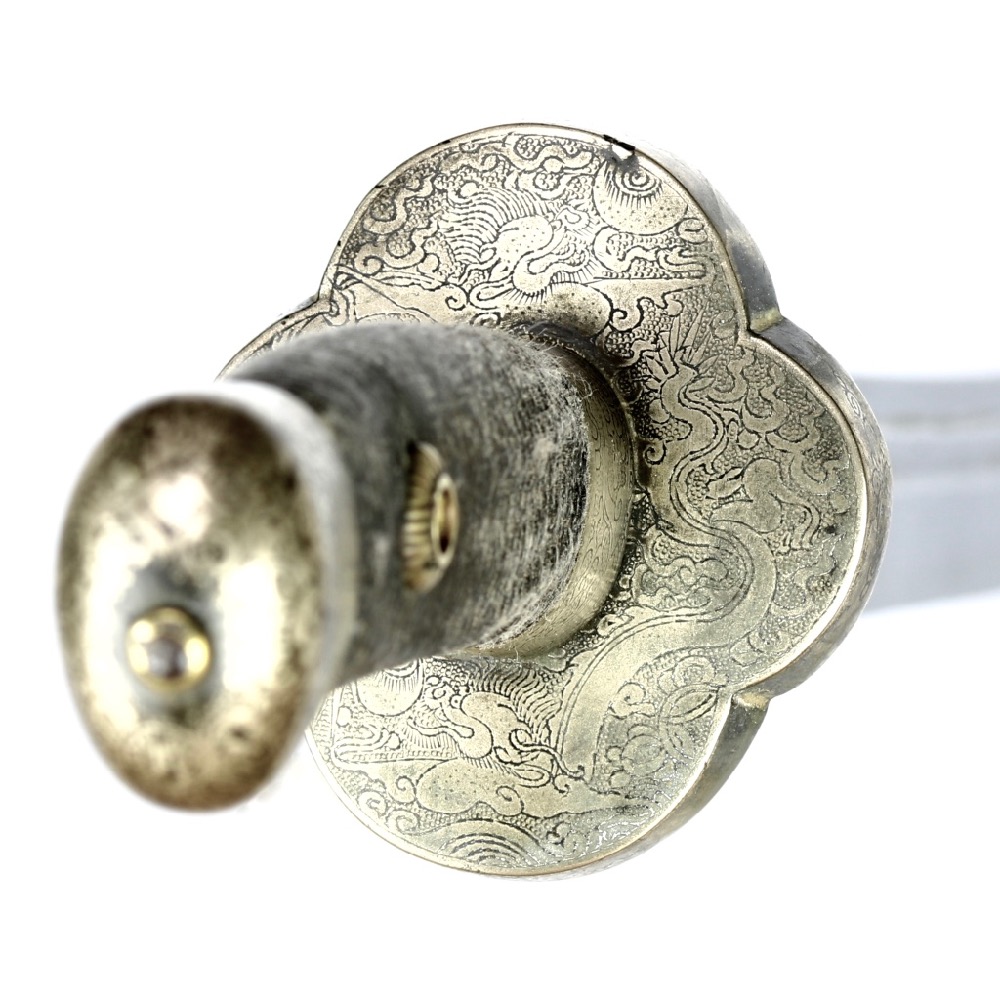
A fine Chinese yànchìdāo
It comes with its complete set of fittings in a thick gauge of báitóng.
Southern Chinese saber
Introduction
The yaodao, literally "waist saber" was the standard side-arm for the Qing dynasty mi
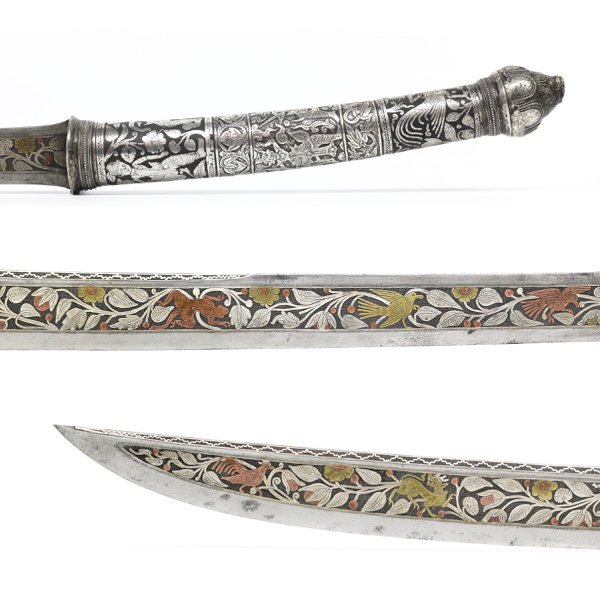
A spectacular Burmese dha
With overlays of vegetal motifs alternated with animals, actual and mythical.
Chinese saber of the Chaoyang army
Late 18th century, complete with its original scabbard.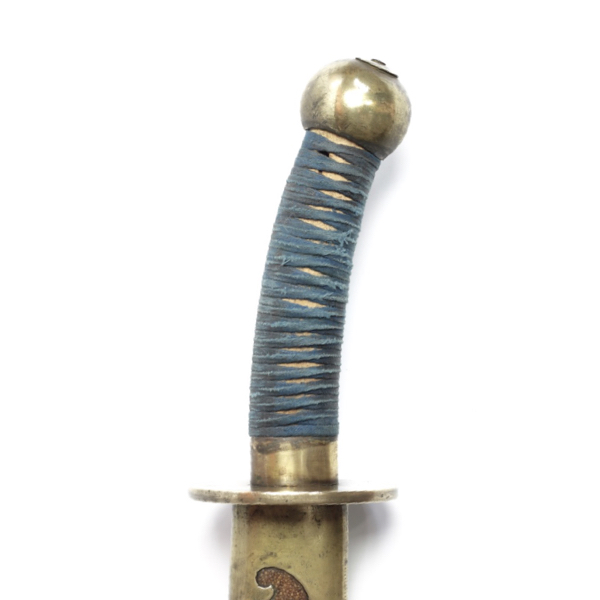
19th century Qing military saber
With massive 10mm thick blade with strong distal taper.
18th century Chinese saber
With fine blade, of liuyedao form with a gentle curvature.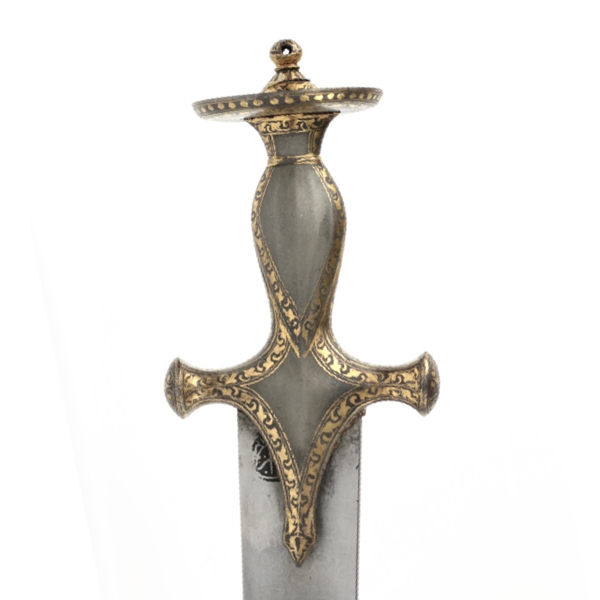
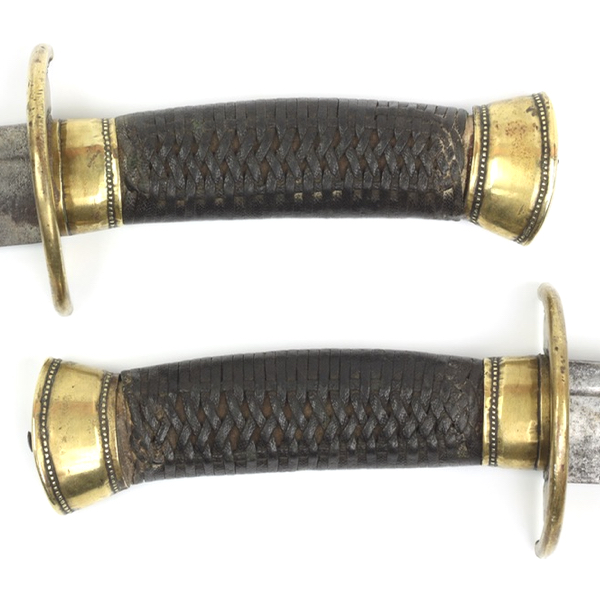
Chinese shuangdao - double sabers
With narrow liuyedao blades of moderate curvature.
Silver mounted Sumatran saber
With inscription that reads: Raja Pagaruyung or "ruler of Pagaruyung".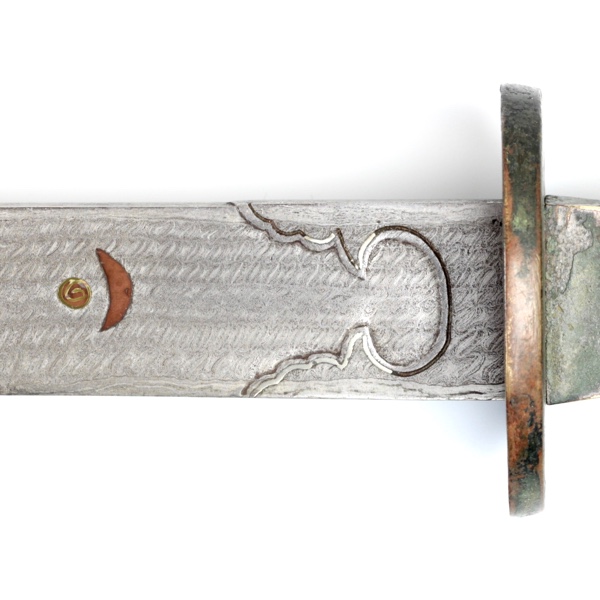
Chinese twistcore presentation saber
An unusually large presentation saber in the style of high-end Chinese military sabers.
Chinese saber with "naginata-hi"
A Chinese waist saber or yaodao / peidao of the first half of the 18th century.
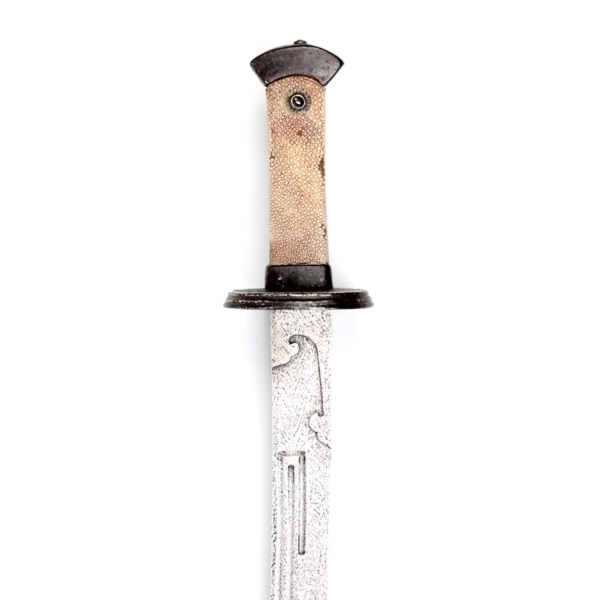
Chinese saber with U-grooves
With twist-core steel and of early liuyedao form. Probably 17th century.
Chinese saber with segmented grooves
With openwork brass mounts in early imperial style.
A talwar with "lehria" chevron blade
With chevron patterned blade of alternating types of steel.
Antique Miaodao
Miaodao simply being a more recent name for the wodao.
A Burmese dha with openwork handle
Made of a single piece of ivory, with a kneeling figure in its base.
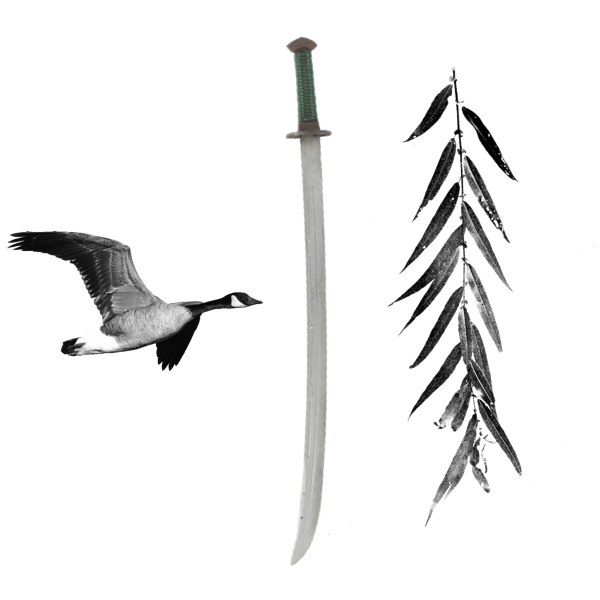
Of geese and willows
The differences between 雁毛刀 yanmaodao (goose-quill saber) and 柳葉刀 liuyedao ("willow-leaf sa
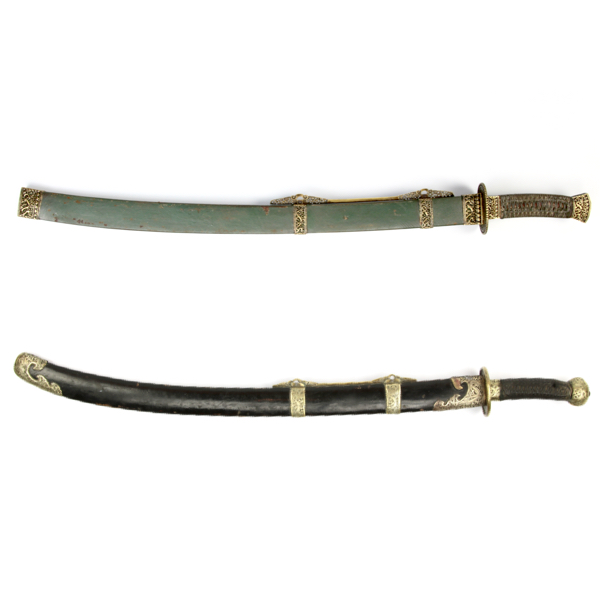
Qing dynasty saber mounts, fangshi & yuanshi
Among sabers of the Qing dynasty, we encounter two basic types of mountings:
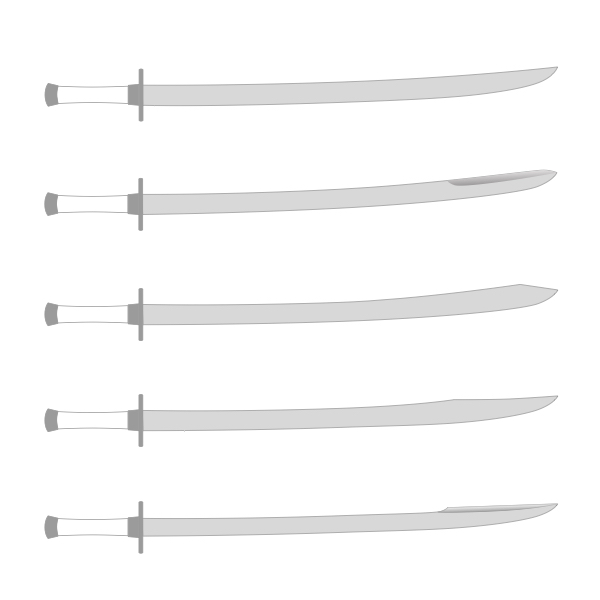
A typology of Chinese sabers
Introduction
Historical references on Chinese saber types are scarce, and the information they provide scan

Horn hilted Vietnamese officer's saber
An unusual Vietnamese officer saber of the 19th century, with an all-horn hilt.
A Sinhalese kasthāné
An impressively large kasthāné, dating from the 18th century.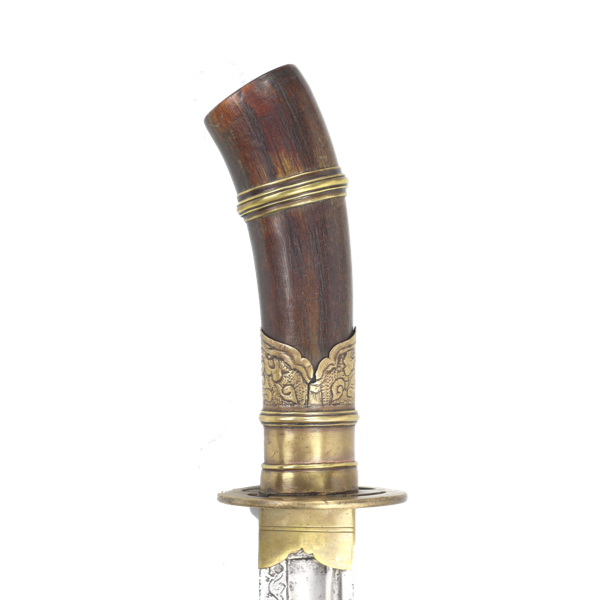
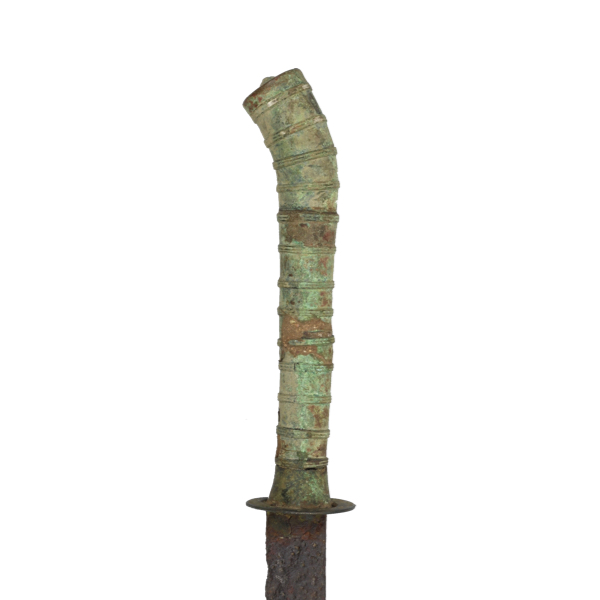
Ancient Cham sword
In excavated condition. Probably 15th-17th century.
